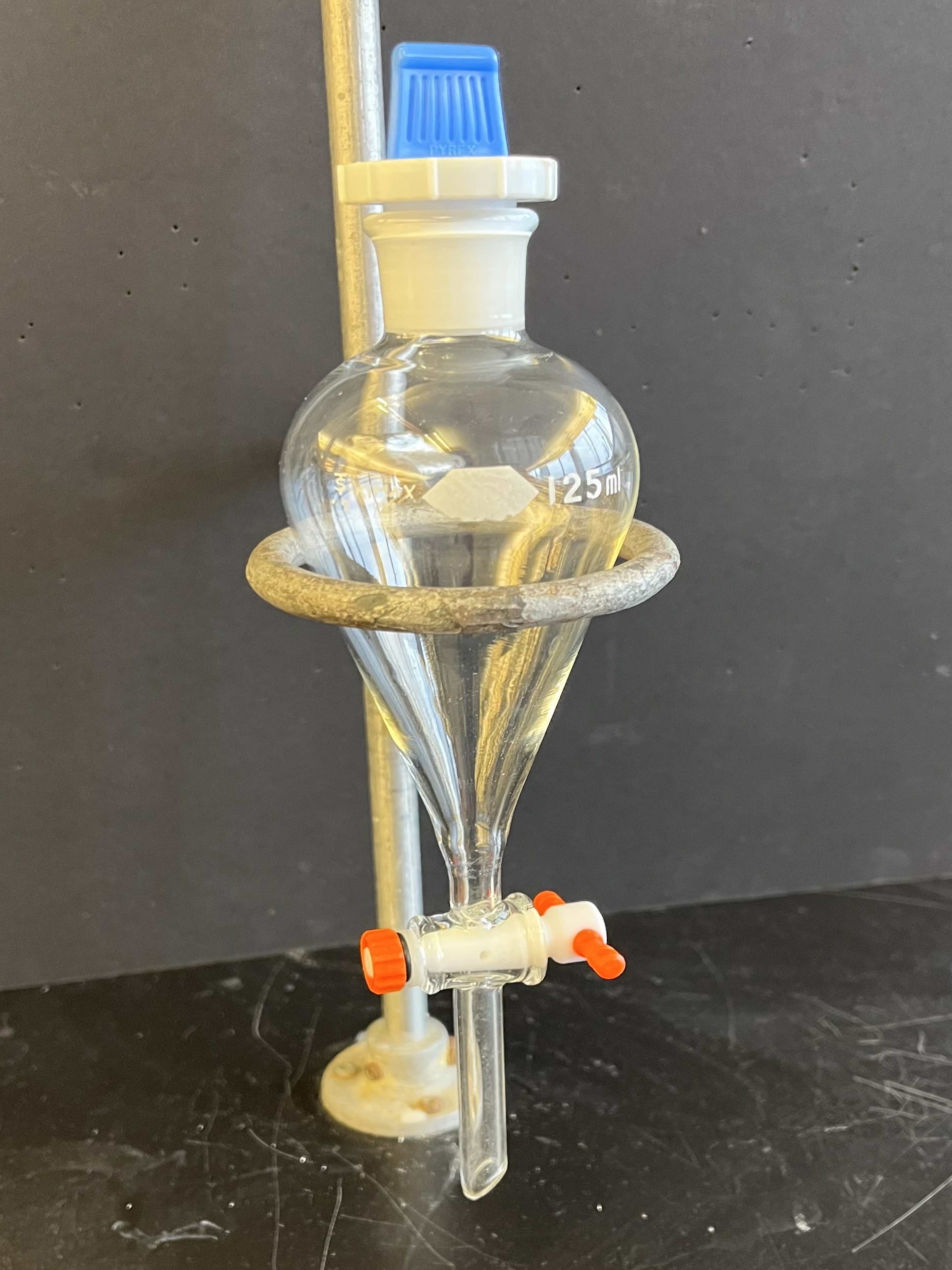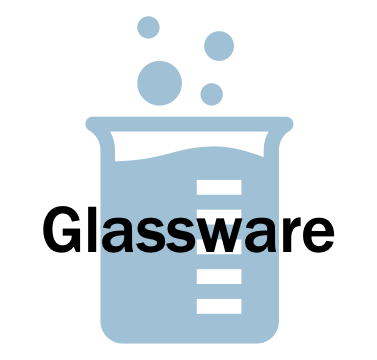
Beaker
Beakers come in a variety of sizes and are used for measuring volumes of liquids, mixing and transporting chemicals. Beakers are not particularly precise. Beakers sometimes have two scales on the side of them, one for measuring the amount of liquid poured into them and one for measuring the liquid poured out.
Accuracy: Approx. 10% Sizes available: 50 mL, 100 mL, 150 mL, 250 mL.
Erlenmeyer Flask
An Erlenmeyer flask has a narrow mouth and a flat bottom making it good for swirling, storing, and heating liquids. In this course the Erlenmeyer flask is used in titrations. This is because the sloping sides and narrow mouth reduce the risk of the solution spraying out of the top while mixing.
Accuracy: Within. 10% Sizes available: 250 mL.
Volumetric Flask
A volumetric flask is used to make up a standard solution of fixed volume very precisely when filled to the calibration mark. The calibration mark is etched in the neck of the flask. It is only precise at 20°C.
Accuracy: Within 0.1% Sizes available: 50 mL, 100 mL, 250 mL.
Volumetric Flask (Cont..)
Mix properly. Invert completely 20 times so the bubble goes all the way from the bottom to the top with each inversion -Not mixing properly will create a solution that is not uniformly mixed, resulting with parts of the solution being more concentrated than others. Do not fill a volumetric flasks with a hot solution -A volumetric flask is designed to contain an exact volume at room temperature 20°C. Adding a hot liquid and filling to the mark will give a lower volume once it cools and therefore the solution will have a higher concentration

Graduated Cylinder
Graduated cylinders are used for general measuring of liquids. They cannot be used for quantitative analysis. If greater precision is needed use a volumetric pipet or volumetric flask.
Accuracy: Within 1% Sizes available: 10 mL, 25 mL, 50 mL, 100 mL.
Buret (with clamp stand)
A buret is a graduated glass tube with a tap at one end used for delivering known volumes of a liquid, especially in titrations. It is a long, graduated glass tube, with a stopcock at its lower end and a tapered glass tip. During use it is held in a clamp stand to keep it straight.
Accuracy: Approx. 1% Sizes available: 50 mL.
Volumetric Pipet
A volumetric pipet allows extremely accurate measurement (to four significant figures) of the volume of a solution. It is calibrated to deliver accurately a fixed volume of liquid. A pipet bulb is used to draw the liquid up through the pipet to the calibration mark.
Accuracy: Within 0.3% Sizes available: 25 mL.
Separatory Funnel
A separatory funnel is used to divide different densities within a mixture by using gentle inversion. This glassware features quick closing taps that release excess vapour pressure before the separation takes place.

Serological Pipet (with bulb)
A serological pipet is used to deliver solutions in increments. The scale on the side of a 10 mL serological pipet is split into 1 mL increments.The volume delivered when using a serological pipet is the difference between the volume indicated before and after delivery, and the last drop in the tip must be blown out.
Accuracy: As accurate as the smallest increment (0.1 mL). Sizes available: 10 mL.
Round Bottom Flask
Specifically shaped for uniform heat distribution, the round bottom flasks are used for distillation, chemical reactions, heating liquid sample, and storage demands. Ensure glass stopper is on when it is not in the fume hood.



